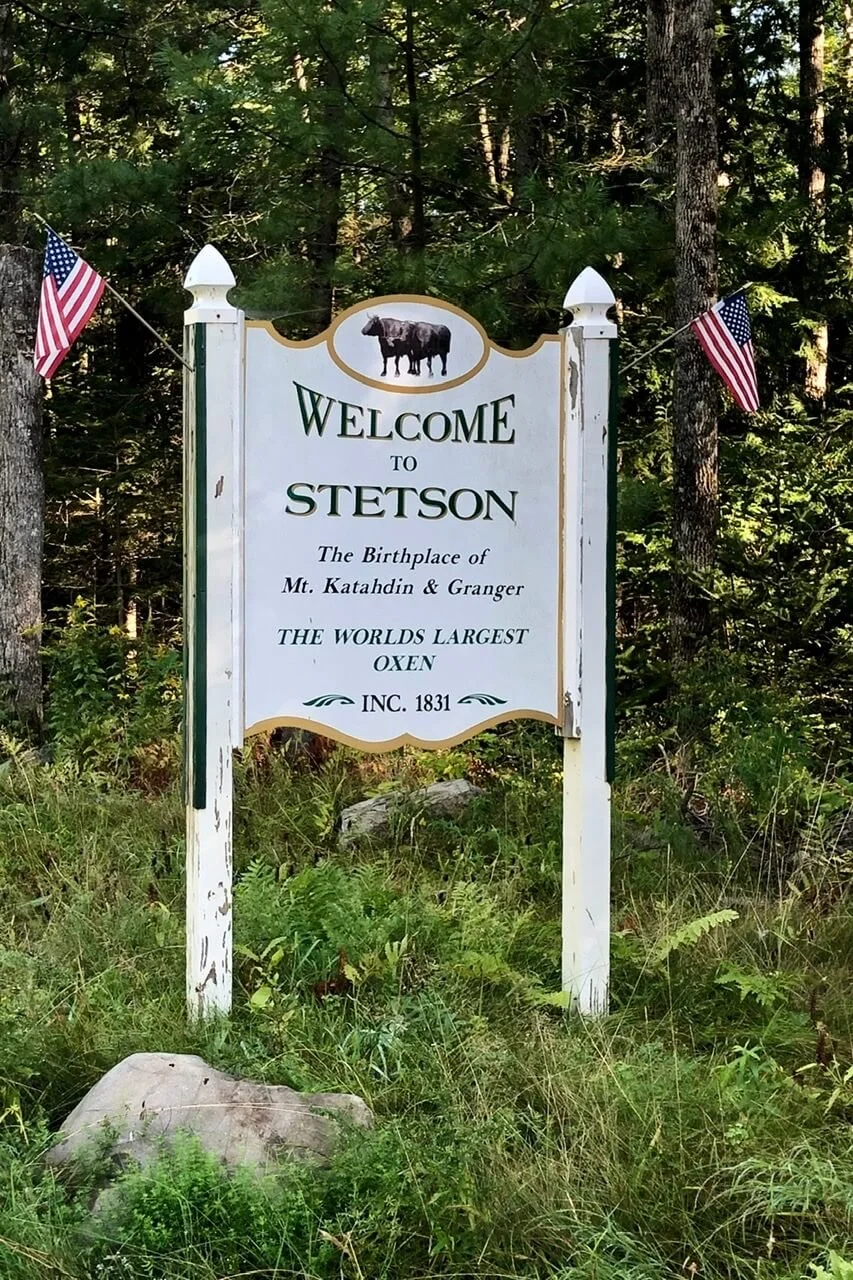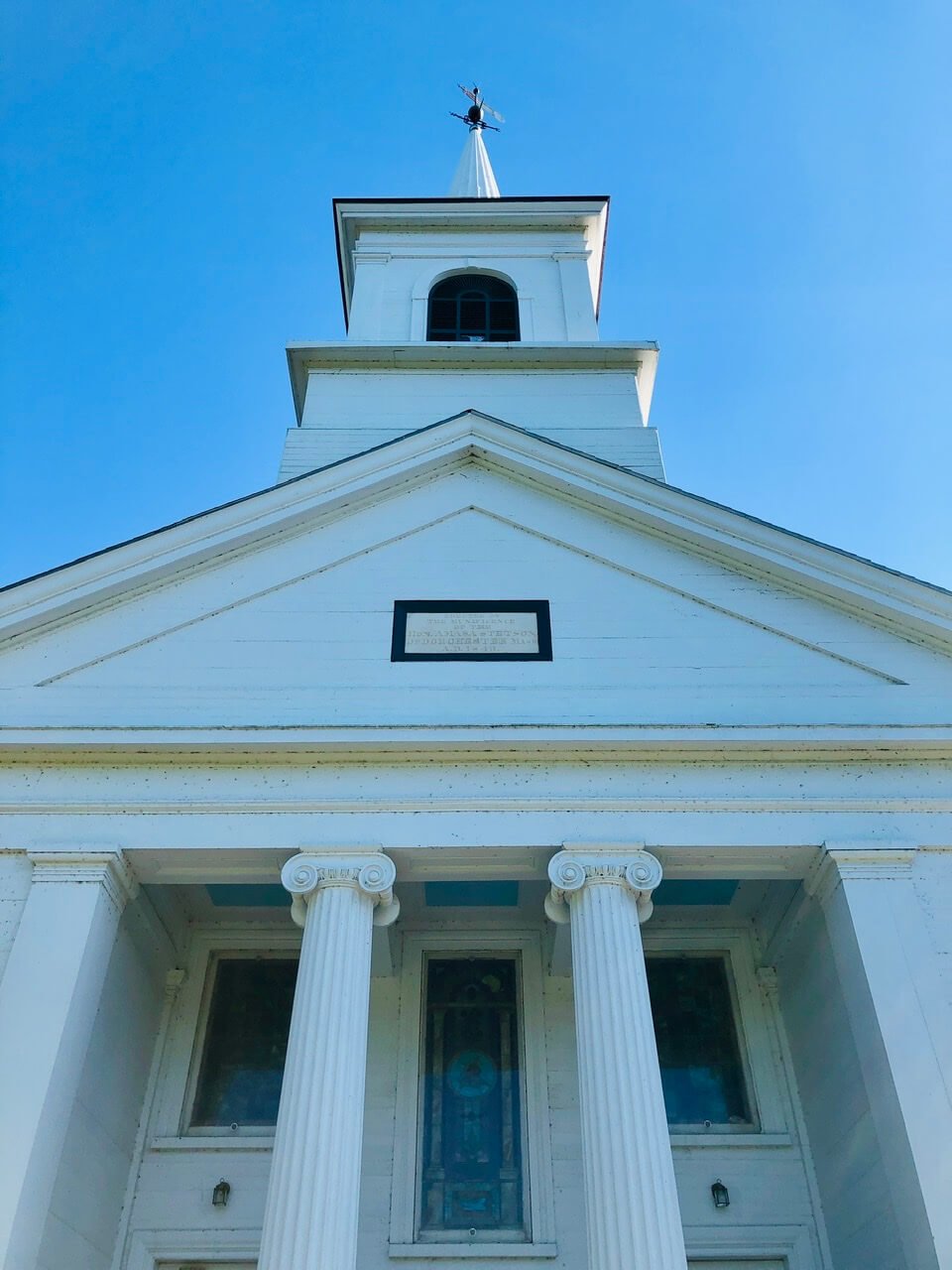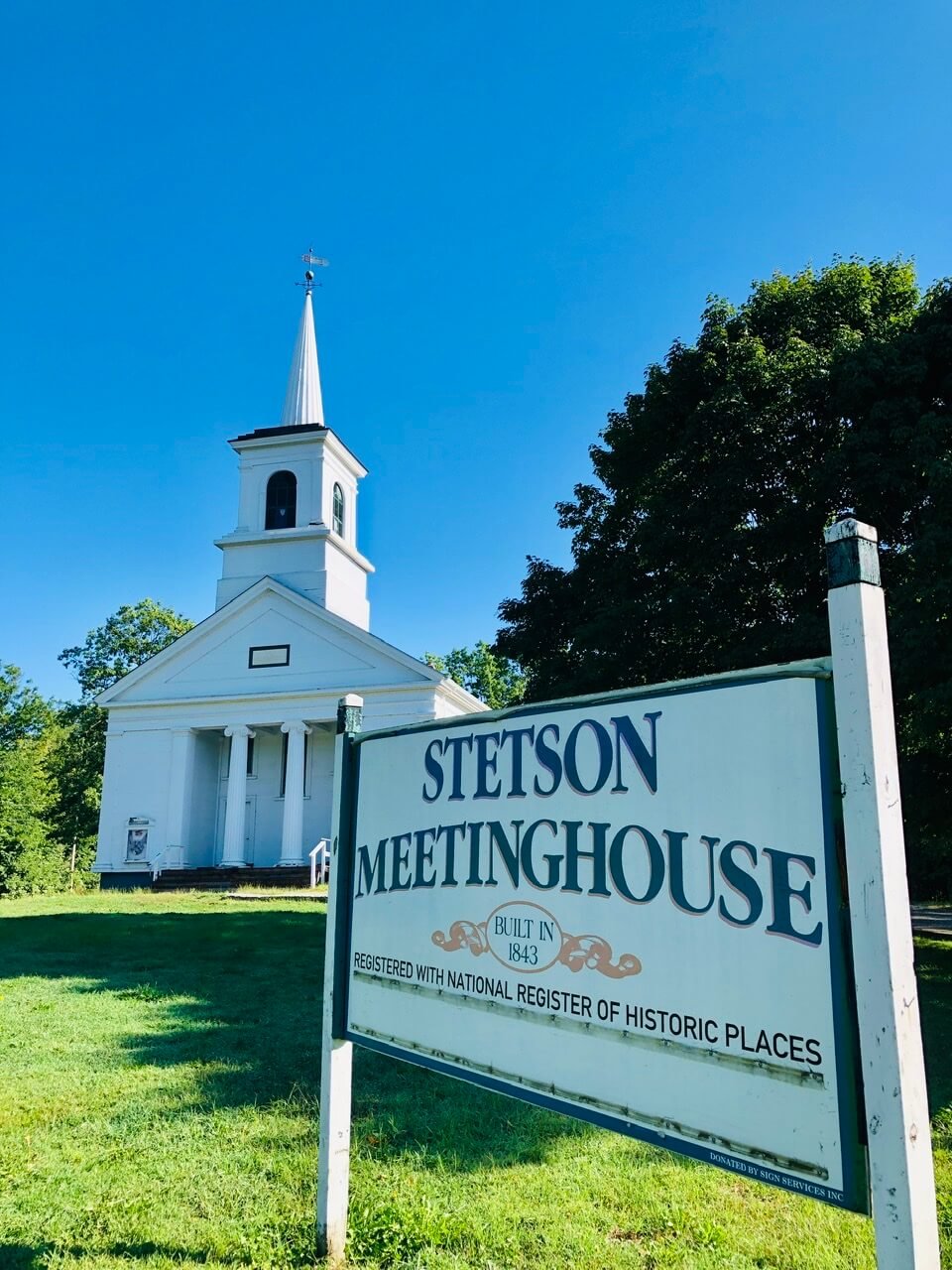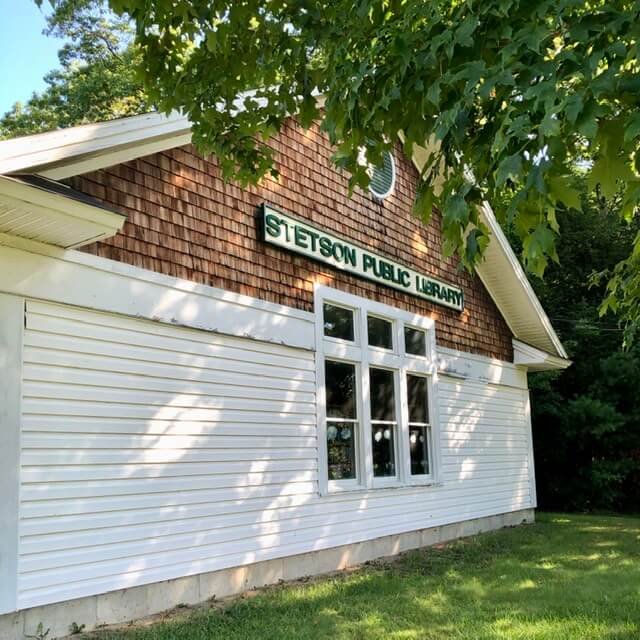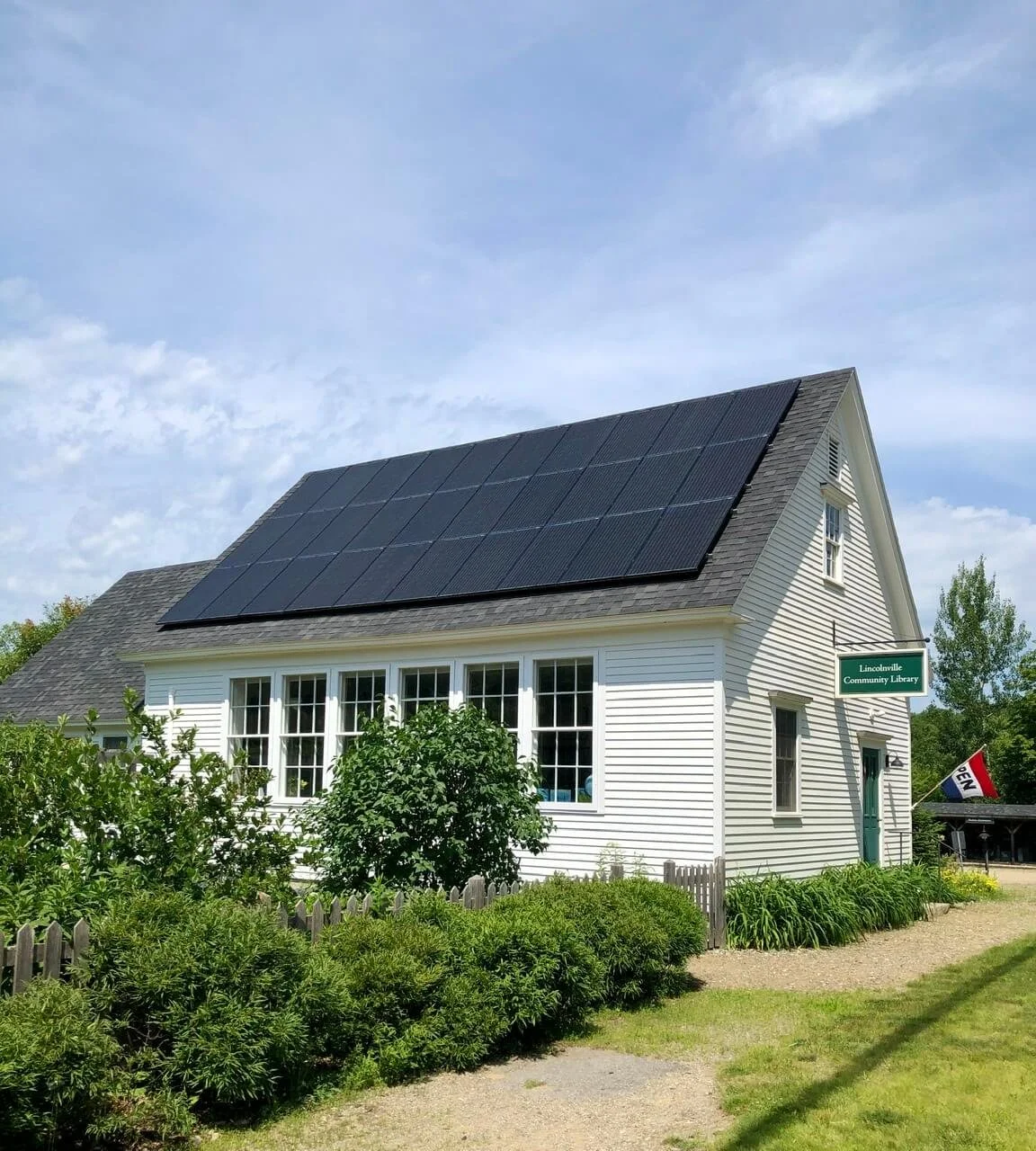Stetson: the other Mount Katahdin
There have been some amazing experiences on this journey to every town in Maine. The trip to Stetson earned its place at the top of that list. The story of this Penobscot County feature may seem unbelievable, but there is a witness who saw it unfold!
It began with the Stetson town sign
Many towns in Maine have two kinds of markers. One simply has the name of the town, often in letters displayed vertically. The second is larger and often shares more details — the incorporation date, a local motto, etc.
When I reached the latter of these in Stetson, I pulled over to the side of the road to take the photo included at the top of this feature.
My brain’s default is to produce a stream of questions (anyone else have the same mental wiring?). As I stood in front of the written welcome, I wondered what the words meant. I understood that the town had a world record claim-to-fame in the large oxen category, but was perplexed by the middle line: “The birthplace of Mt Katahdin…”
THE Maine Mountain
Mount Katahdin is Maine’s highest peak. It is located in Piscataquis County…about ONE HUNDRED miles north of Stetson. What could it mean that its birthplace was here?
The Stetson town sign also mentioned Granger. Who or what was that? Maybe it was connected to the famous oxen? Clearly more research was needed.
Historic Points in Stetson
Placing my questions on hold, I continued down the road and enjoyed some of the historic buildings in town. The old grange hall looks anything but old. It has been beautifully preserved.
Old Grange Hall
in Stetson
One of the most prominent buildings is the meetinghouse. It was built in 1843, a gift from the town’s namesake: Major Amasa Stetson. Late in the 20th century, the grand building began to show its age as the foundation became unstable. In the 1980s, the townspeople voted to move the building and place it on a new concrete base. They successfully completed the big project. The structure continues to be used.
Learning More…
The library is an essential stop in nearly every town I feature. Sadly, the timing of my visit didn’t coincide with the open hours of this treasure trove. I headed to the “big city” to dig for more Stetson information at the Bangor Public Library.
The Town Library
Finding Answers and Being Surprised
Maine libraries have been invaluable for the work of Maine Features. The local history section is often a gold mine of data. As I made my way to that section of the Bangor Public Library, the assistant on hand was eager to help. She located several small books and documents with Stetson history, along with a recently published compilation of the town’s vital records. I shared with her the first question I was attempting to answer — the meaning behind the town sign.
I settled in at one of the tables and opened the first booklet. I nearly laughed out loud (which is not exactly proper library etiquette). There was the answer to my question in the form of a photo…
image used with the permission of the Stetson Historical Society
I walked back to the front desk to show the librarian assistant who celebrated with me. Returning to the table, I began pouring through the resources to learn more about these gigantic creatures, along with other town history. As usual, I jotted down some notes and a list of questions I needed to get answered.
Stetson’s Name(s)
In a document produced by the Stetson Historical Society, I read that the community took their time and made a few attempts at incorporation. The folks of Liberty, Maine over in Waldo County will be interested to learn that their name almost wasn’t an option for them when they officially organized in 1827. In the first meeting up in Penobscot County, the citizens voted on April 3, 1820 “that this plantation petition for an incorporation by the name of LIBERTY…” Two months later, they changed their minds and withdrew the petition. Eventually they considered “SALEM” before deciding on “STETSON.”
The long-awaited moment…
About thirty minutes into my study, the library assistant and another individual approached my table. The staff member was clearly surprised as she introduced me to Julie Shepardson. I was astonished as I had just written that name on my paper as a possible source to answer my questions. She is part of the Stetson Historical Society and the one who compiled the vital records book that was sitting in my stack of reading material. Julie graciously sat down and took time to chat about Stetson. It was surreal.
I told Julie how I had already solved my first question by reading about good old Mt Katahdin and Granger. Things moved from surreal to truly unbelievable when Julie knowingly shook her head and then shared that Mr Rand—the farmer who raised those oxen—was her great, great-grandfather! It was too much, especially considering that we were not even in Stetson when our paths crossed, but a half hour away in Bangor.
The story of these oxen legends can be read on the Maine Memory Network: The World’s Largest Oxen.
Maine Features has given me the opportunity to meet so many wonderful Mainers. That list grows as I check off the towns one-by-one. No matter how many names get added to that number, it seems high improbable that I will ever forget the day I met Julie, the great, great-granddaughter of Farmer Rand from the town known as the birthplace of Mt Katahdin and Granger (my apologies to the latter for not making much of his name).
Since you never know what will happen on the next town feature, be sure you’re connected via the Maine Features social channels, and/or sign up to get the latest updates delivered to your email so you aren’t at the mercy of the algorithms. Drop your address in the box at the bottom of this or any other page on the site.
My deep appreciation—which is nearly as weighty as oxen from Stetson—to Julie and the fine librarians of the Bangor Public Library.
